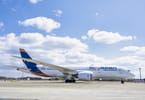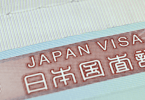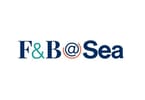Delta Air Lines has turned into a massive cash cow of the US airline industry in the last few years. The airline industry has become much more stable and profitable, and Delta has been leading the way.
Most importantly, unlike its top rivals — American Airlines and United Continental — Delta is keeping its capital spending in check. This will enable it to generate an average of $3 billion in annual free cash flow for the next several years.
This massive influx of cash means Delta can have its cake and eat it, too. On Tuesday, Delta announced plans to raise its dividend and spend $2 billion on share repurchases by the end of 2016, while also reducing its debt levels and pension liability. None of Delta’s competitors have sufficient free cash flow to replicate this type of plan.
As reported first in the Motley Fool:
A year ago, Delta introduced its first capital return program. The company implemented a $0.06 per share quarterly dividend to return approximately $200 million to shareholders each year. It also announced a $500 million share repurchase, to be completed by mid-2016. Meanwhile, Delta planned to reduce its adjusted net debt from $11.7 billion at the end of 2012 to under $7 billion by the end of 2017.
However, Delta’s profit and cash flow improvements have far outpaced its assumptions. Just five months ago, Delta laid out a set of long-term earnings and cash flow targets. The plan called for a 10%-12% operating margin, 10%-15% long-term EPS growth, 15% return on invested capital, and $5 billion in annual operating cash flow, with half reinvested in the business.
Delta has already revised this recent plan upwards. As of this week, Delta now expects a long-term operating margin of 11%-14%, a 15%-18% return on invested capital, and $6 billion in annual operating cash flow.
The resulting $3 billion in annual free cash flow means Delta has plenty of money to address all of its capital priorities. Now it plans to hit a $5 billion adjusted net debt target by 2017 while raising its annual dividend payments to approximately $300 million, and adding $2 billion to its buyback authorization.
United Continental and American Airlines can’t keep up
The secret to Delta’s strong cash flow is that it has been able to grow earnings without making massive investments in new aircraft. The same can’t be said for its top competitors.
American Airlines has also posted strong earnings growth recently, and it may earn nearly the same pre-tax profit as Delta this year. However, American is spending tens of billions of dollars to replace dated aircraft in the next several years: roughly $5.5 billion per year through 2018.
Even if American Airlines matches Delta’s annual operating cash flow target of $6 billion, that would produce meager free cash flow of $500 million until American’s heavy investment cycle winds down. If American is just slightly less profitable than Delta, then it could produce no free cash flow whatsoever for the next five years.
It is important to note that American Airlines has a massive cash pile right now, totaling about $10.6 billion. Some of this may be returned to shareholders in the next few years. That said, American also has nearly $17 billion in debt, and it will certainly want to use much of its cash to reduce this debt burden.
United Continental has the worst of both worlds; it’s spending more money on planes than Delta, but it is not generating commensurate profits. United and Delta were posting similar earnings results as recently as 2011. However, United’s earnings before interest, taxes, depreciation, and amortization has fallen since then, while Delta has posted steady EBITDA growth.
WHAT TO TAKE AWAY FROM THIS ARTICLE:
- As of this week, Delta now expects a long-term operating margin of 11%-14%, a 15%-18% return on invested capital, and $6 billion in annual operating cash flow.
- The plan called for a 10%-12% operating margin, 10%-15% long-term EPS growth, 15% return on invested capital, and $5 billion in annual operating cash flow, with half reinvested in the business.
- On Tuesday, Delta announced plans to raise its dividend and spend $2 billion on share repurchases by the end of 2016, while also reducing its debt levels and pension liability.






















